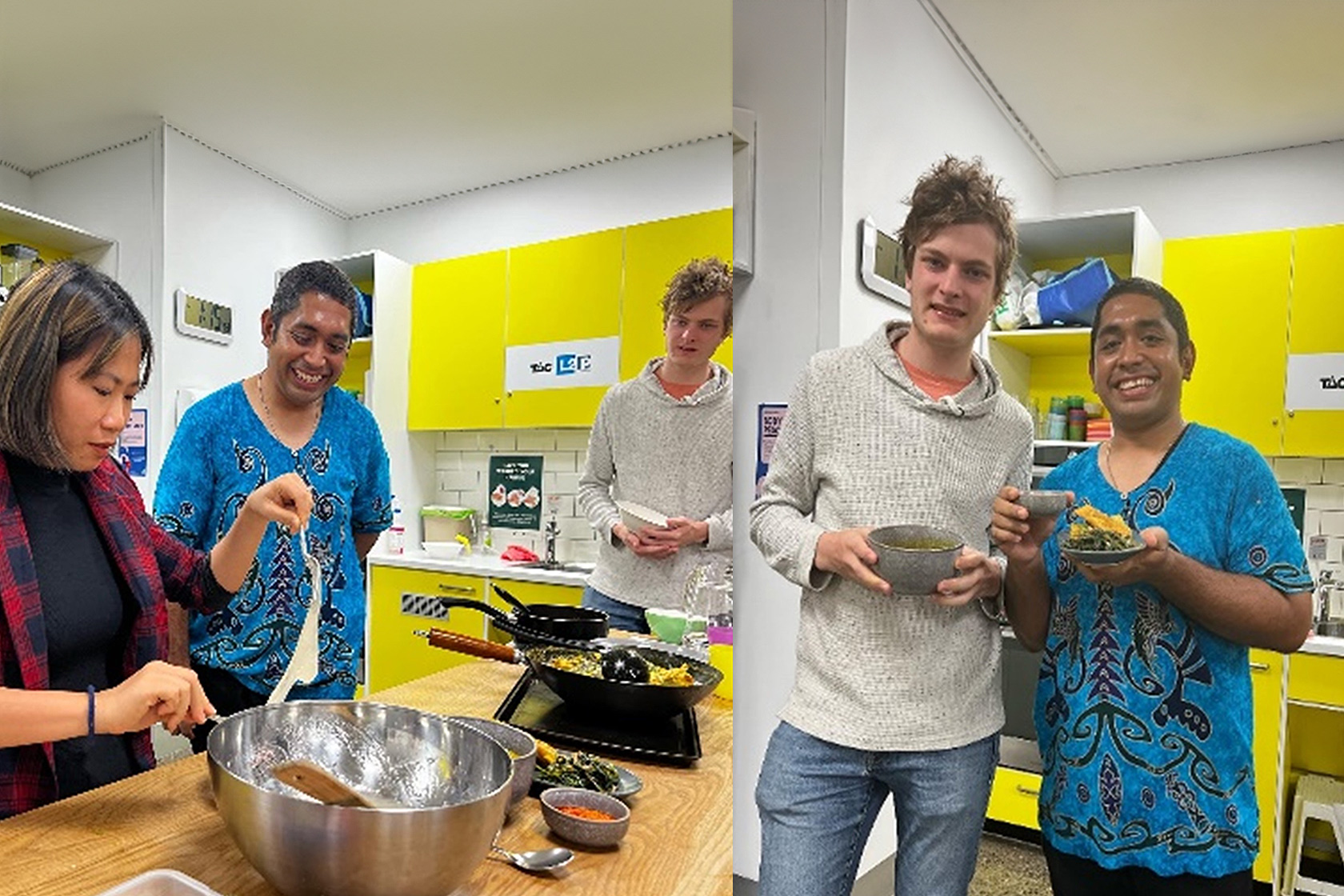Written by Yacob Manuhua, the runner-up of the "Journey Chronicles: Celebrating Australia-Indonesia Bonds" Short Story Competition
At the heart of the celebrations, the Boroondara Youth Centre was abuzz with excitement. Last year, in March 2023, the focus was on showcasing the myriad cultures that enriched the city's vibrant tapestry, and I was thrilled to be invited to share a piece of my Indonesian heritage through food.
The invitation had come as a delightful surprise. Gabriela, my Student Contact Officer at Swinburne, had noticed my passion for cooking through the photos and videos I posted on social media. Knowing my love for Indonesian cuisine, she suggested my name to Emma, the Youth Program Manager at the Boroondara Youth Centre. When she told me about the opportunity to showcase Indonesian foods in front of the youth, I couldn't have been more excited to introduce “papeda ikan kuah kuning dengan kangkung tumis (papeda with turmeric fish soup and stir-fried morning glory)”.

Papeda, a traditional dish from Eastern Indonesia, is a sago-based dish often paired with a savoury fish soup and vibrant stir-fried greens. It perfectly represents Indonesia’s rich and diverse culinary traditions, especially from the East. The idea of sharing this dish with young people in Melbourne filled me with pride and excitement as I had the chance to introduce the beauty of Indonesia through traditional cuisines.
When the event day arrived, I carefully packed all the ingredients I needed. Fresh sago, vibrant yellow turmeric, all aromatics and spices, freshly caught fish, and bundles of kangkung, known as water spinach, filled my bags. As I walked into the youth centre, the aroma of various cuisines already filled the air, a testament to the diverse backgrounds of the participants.
Emma greeted me with a warm smile. "I'm so glad you could make it! Everyone is really looking forward to your demonstration."
"Thank you for this opportunity," I replied, feeling nervous and excited.
I was led to a spacious kitchen area where a group of eager faces awaited. Some of the youths were already gathered, curiosity shining in their eyes. I introduced myself and began sharing a bit about the dish I would be making.
"Papeda is a staple food in Eastern Indonesia," I explained, holding up the bag of sago. "It's unique in texture, almost like glue, but it's delicious when paired with a flavorful soup.”
I started with the papeda. After soaking sago in a bowl, I boiled the water before gradually pouring into the sago. The key to perfect papeda is constant stirring, ensuring it achieves the right consistency – thick and smooth. As I stirred, I shared stories about the origins of the dish and its significance in my home island, Papua.
Next, it was time for the fish soup. I showed the group how to prepare the turmeric paste, combining fresh turmeric, garlic, and shallots, galangal, lemongrass, lime leaves in a mortar and pestle. The fragrant paste sizzled as it hit the hot oil, filling the room with a warm, earthy aroma. I added fresh fish and water, explaining how these ingredients are staples in many Indonesian dishes.
"The turmeric gives the soup its vibrant yellow colour and a unique flavour," I explained as the soup simmered. "It's not just tasty but also very healthy."
As the soup cooked, I moved on to the stir-fried vegetable. I heated a wok and added garlic and chilli, letting the flavours infuse the oil before adding the freshwater spinach. The greens wilted quickly, and the dish came together in just a few minutes.
With all the components ready, it was time for the best part: tasting. I invited the youth to join me in trying the dish. We stirred the papeda onto bowls, ladled the aromatic fish soup over it, and added a generous helping of the stir-fried kangkung on the side. Not to mention homemade chilli paste to add spiciness and sourness to the soup. The room was filled with appreciative murmurs as everyone dug in.

"This is amazing!" one of the teens exclaimed. "I've never tasted anything like this before."
I smiled, feeling a deep sense of satisfaction. "Indonesian food is all about bold flavours and fresh ingredients," I said. "I'm glad you like it."
As we ate, we talked about the importance of food in cultural identity and how sharing meals can bring people together. The youth were curious about other Indonesian dishes and my experiences growing up with such a rich culinary heritage. I felt a strong connection with them, united by our shared love for food and the joy of discovery. I also shared with them the philosophy behind Papeda. "Though it may look like glue," I explained, "this symbolises the bonds among Papuans. We are close, our connections tight and united, much like the motto of Indonesia – unity in diversity." They finally understood and promised to visit Eastern Indonesia, especially Papua, in the future.
Emma approached me as the event wound down. "You did an incredible job," she said. "The participants really enjoyed it, and I think they learned a lot."
"Thank you," I replied. "It was a pleasure to share a piece of my culture with them. Food has a unique way of bridging gaps and bringing people together."
As I packed up my things, I felt a sense of accomplishment. Diversity Week in Melbourne has given me the chance to showcase a beloved dish from my homeland and connect with the youth of Melbourne in a meaningful way. The smiles and enthusiastic responses of the participants were a testament to the power of food in celebrating and understanding our diverse world.
Walking out of the Boroondara Youth Centre, I knew this experience would remain a cherished memory. It was more than just a cooking demonstration; it was a celebration of culture, community, and the beautiful diversity that makes our world so vibrant.



 Stirring Culture: A Taste of Papeda in Melbourne
Stirring Culture: A Taste of Papeda in Melbourne
